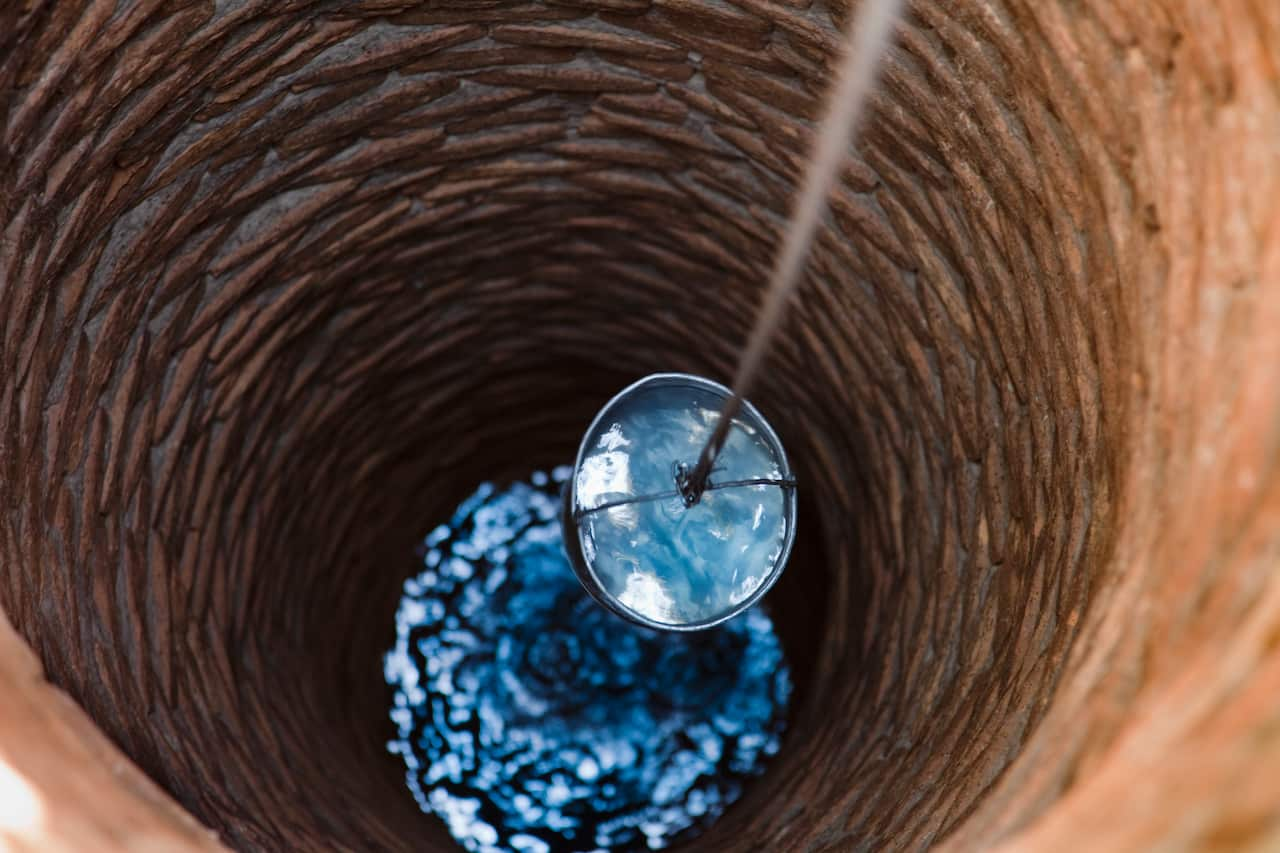Key Points
- Thirty per cent of Australia’s groundwater supply is deteriorating in terms of amount and quality, according to experts.
- Underground aquifers are heavily relied on for irrigation and in some cases, drinking water via wells and bores.
- Scientists have shown the health of groundwater directly affects the health of ecosystems such as wetlands above ground.
It is used to irrigate 40 per cent of all crops on Earth and provides around half of the world’s drinking water.

Half of the world’s drinking water comes from underground reserves and is accessed via bores and wells. Credit: Gary S Chapman/Getty Images
“European cities such as Copenhagen and Vienna are completely dependent on their groundwater resources for domestic purposes,” Saccò says.
Research by Saccò and his small team in the Subterranean Research and Groundwater Ecology (SuRGE) group has also shown a direct link between the quality of groundwater ecosystems and those above ground.

Dr Mattia Saccò, senior lecturer in aquatic ecology at Curtin University in Perth, at work, and below: some species detected in Western Australia groundwater. Credit: Supplied
A threatened ecosystem – here’s how you can help
For example, people should choose endemic species of plants for their yards as these require less watering than exotic, introduced species, he says.

Planting native, endemic species in gardens greatly reduces demands on water, says Saccò. Source: Pixabay / Pixabay (CC0)
He adds that people should constantly monitor the water levels of the aquifers they are using and that water for recreational purposes such as irrigating sporting ovals should be limited especially during droughts.
“We should (also) avoid unnecessarily contaminating the soil with excessive fertilisers, which would eventually percolate inside the aquifer and (diminish) the overall groundwater quality,” he says.
In essence, we should consider groundwater as our most precious, publicly accessible source of water, and treat it accordingly.
Dr Mattia Saccò

Reduced rainfall due to the effects of climate change impact heavily on Australia’s groundwater supplies, according to scientists. Source: Moment RF / Vicki Smith/Getty Images
“On the other hand, there is climate change. Higher temperatures and less rain mean that groundwater basins recharge more slowly and with increased difficulty,” Saccò says.
“In Perth and Mandurah, about 70 per cent of the water consumed comes from groundwater,” he adds.

Due to scarce rainfall and an arid environment, Perth derives 70 per cent of its water from groundwater. Source: AAP
“In Western Australia, for example, reduced and more scattered rainfall events result in less groundwater recharge, and this reduced water availability impacts on communities living in certain areas, and consequently on agriculture and industry.”
What lives in underground water?
These species have evolved over thousands of years in very specific conditions, with no light and fewer nutrients compared to those found in lakes and rivers, he explains.

Astyanax mexicanus, Characidae or blind cave fish. Credit: Wikimedia
These animals have lost their sight and pigmentation and some have even developed appendages to more effectively interact with the environment.
“One of the most charismatic of these animals is the proteus, an aquatic salamander with an extraordinary ability to fast: it can survive without food for up to 96 months and can live for more than 100 years,” Saccò says.

The Proteus anguinus is an aquatic salamander. It is blind, while its other senses, particularly smell and hearing, are acutely developed. Credit: gremlin/Getty Images
The depletion of groundwater endangers these species, which play a fundamental role in life on Earth.
“An intact groundwater ecosystem is crucial for the conservation of surface biodiversity. One of the most striking results of our research was that it demonstrated the interrelationship between these environments.”
